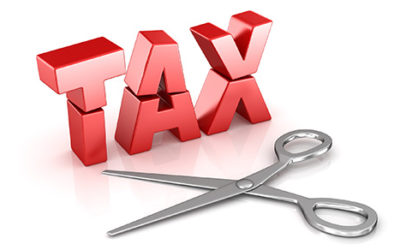On Wednesday night, the U.S. Senate passed The House bill called the Paycheck Protection Flexibility Act and sent it to President Trump, who is expected to sign it. This bill changes things on the Paycheck Protection Program.
Here is a summary of main points of the legislation:
- You now have 5 years to repay the loan instead of 2. The interest rate remains at 1%.
- CRITICAL NOTE: This would take effect on the date of the bill’s enactment and apply to any Paycheck Protection Program loan made on or after such a date; however, lenders and borrowers would not be prohibited from mutually agreeing to modify the maturity terms of prior-disbursed PPP loans.
- You can chose to 1) keep the 8-week covered period or 2) extend it to 24 weeks. [The covered period cannot extend beyond December 31, 2020]. This flexibility is designed to make it easier for more borrowers to reach full, or almost full, forgiveness.
- The payroll cost requirement drops from 75% to 60%, but is now a cliff, meaning that borrowers must spend at least 60% on payroll or none of the loan will be forgiven. Currently, a borrower is required to reduce the amount eligible for forgiveness if less than 75% of eligible funds are used for payroll costs, but forgiveness isn’t eliminated if the 75% threshold isn’t met.
- Borrowers can use the 24-week period to restore their workforce levels and wages to the pre-pandemic levels required for full forgiveness. This must be done by Dec. 31, a change from the previous deadline of June 30.
- The legislation includes two new exceptions allowing borrowers to achieve full PPP loan forgiveness even if they don’t fully restore their workforce. Previous guidance already allowed borrowers to exclude from those calculations employees who turned down good faith offers to be rehired at the same hours and wages as before the pandemic. The new bill allows borrowers to adjust because they could not find qualified employees or were unable to restore business operations to Feb. 15, 2020, levels due to COVID-19 related operating restrictions.
- Eliminating the six-month deferral of payments due under PPP loans and replacing it with deferral until the date on which the amount of forgiveness determined under the CARES Act is remitted to the lender. If a borrower fails to apply for forgiveness within 10 months after the last day of the PPP loan forgiveness covered period (i.e., the earlier of 24 weeks from origination or December 31, 2020), the borrower must then begin to make payments of principal, interest, and fees on its PPP loan.
- The bill allows businesses that took a PPP loan to also delay payment of the 6.2 percent employer portion of social security payroll taxes, regardless of whether they have had a PPP loan forgiven. Currently, this is prohibited under the CARES Act.
We already have a couple immediate questions on how the Paycheck Protection Flexibility Act will change the already issued SBA PPP Loan Forgiveness App and instructions and Interim Final Rules on Forgiveness.–
- Are we now allowed to pay any individual more than $15,385?
- Is a Self-employed individual now allowed to pay themselves more than $15,385?
This legislation itself is rather brief, it mostly changes the language of the CARE Act. We will provide more clarification on these questions and the other provisions when the final bill language is released.
What to do next
- Contact us with questions,
- We will be updating our PPP Loan Forgiveness Guide: read it and implement the changes,
- Continue with PPP Forgiveness planning even though the covered period is extended to 24 weeks. Lets keep the momentum going, close this up over the next several months and re-focus on making money!
- Continue to review additional guidance posted by the SBA or Department of Treasury,
- Talk with your banker about forgiveness and review their guidance. Attend all of your banks webinars on PPP Forgiveness.


